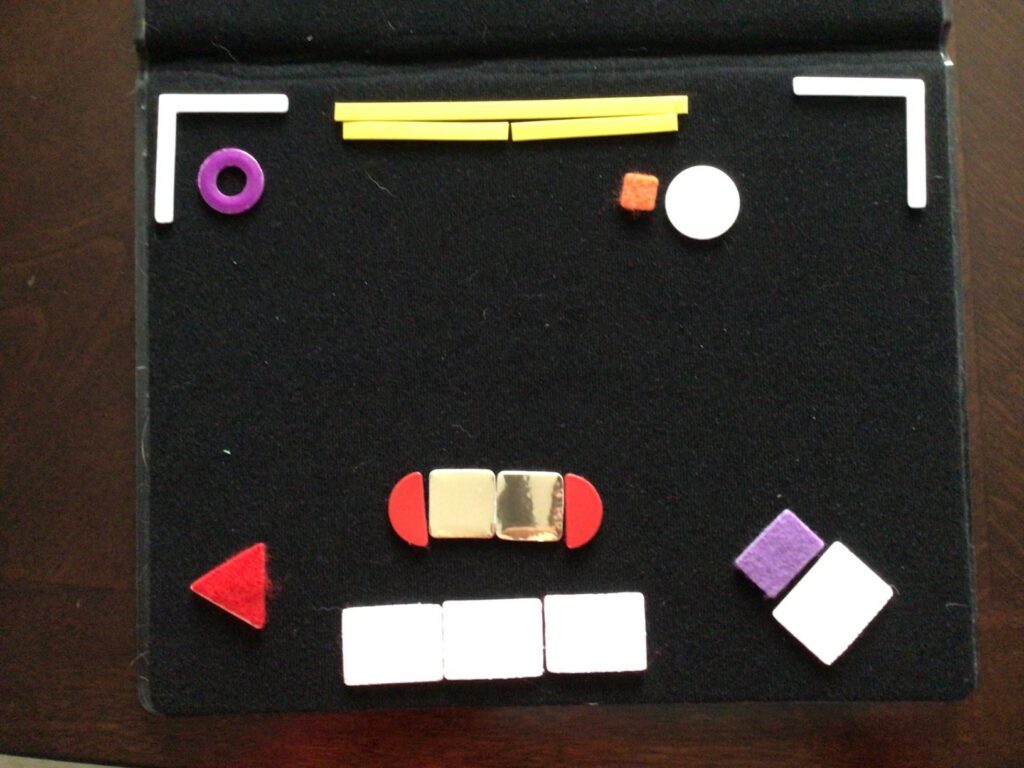This content is also available in:
Español (Spanish)
 Alexis Read using the Picture Maker: Wheatley Tactile Diagramming Kit
Alexis Read using the Picture Maker: Wheatley Tactile Diagramming Kit
Imagine that you are assigned to an unfamiliar school for your student-teaching placement. Your vocational rehabilitation counselor has purchased the Picture Maker: Wheatley Tactile Diagramming Kit for your use in learning routes in the school and new community because he understands the benefit of this tool. Now imagine you meet your new orientation and mobility (O&M) instructor and show him this tool. You ask him to make a tactile map of the targeted indoor routes. He has worked as a mobility instructor for many years. He says, “I’m teaching you to survive without using tactile maps.”
Imagine no more. This experience happened to me in 2005 as I prepared to begin my student teaching at a local high school. Through this experience, I learned a valuable lesson related to self-advocacy: you can request a new instructor if things are not working for you.
 Picture Maker: Wheatley Tactile Diagramming Kit
Picture Maker: Wheatley Tactile Diagramming Kit
My Story Requesting the Wheatley
Here is the story. I was assigned to student teach psychology at a large high school in my home state in the fall semester of 2005. Before beginning the placement, I met with my vocational rehabilitation counselor. I discussed with him what tools or devices I would need to be successful in this field experience. One of those items was the Picture Maker: Wheatley Tactile Diagramming Kit, often called the “Picture Maker.” I intended to use this with O&M instruction to learn the school layout and study the map between lessons. Tactile maps benefit me as I can feel the shape of the route, which helps me imprint the route in my memory. My counselor agreed.
Fast forward to when my orientation lessons began at the high school. The instructor taught me the route from the school’s front door to my assigned classroom during the first lesson. His method of teaching routes, which did not include tactile maps, involved having me look at the ceiling or floor and count tiles or light fixtures.
When I repeatedly struggled with the method, I asked the instructor again to make a tactile map of the route using the Picture Maker. Again, he refused because he felt it was unnecessary. He seemed to believe that students with low vision should rely strictly on their vision to learn a route. However, I easily lost track when counting light fixtures or tiles on the floor, which proved unreliable.
From Lacking Confidence to Advocating
After that instructor and I finished our allotted hours together, I still lacked the confidence to travel independently in the school. I ultimately contacted my very first O&M instructor for additional support. He helped me relearn the routes using techniques that worked for me, including the use of the Picture Maker.
With 17 years of hindsight, I know I should have been a stronger self-advocate. Had I asked for a different instructor, I may have had a more successful overall experience in that school as I would have been more confident in navigating the school setting, but I was young then and less proactive than I am now.
Since then, I have moved to various locations around the country. The Picture Maker has been an invaluable tool in my O&M toolbox. Each subsequent instructor I worked with was glad to use it to help me learn routes, whether outdoors or indoors. Combined with a small notebook where directions were written, I could learn routes more efficiently and confidently.
Tips for Advocating
If you find yourself in a situation where an instructor is not listening to you and is teaching using one method without being open to anything else, advocate for what you need. You have the right to be comfortable working with the instructor, and if that means asking for modifications to the instructional method, don’t be afraid to speak up. If all else fails and there are no changes, talk with someone higher up in the agency or school chain of command to request a change in instructor. Having an instructor whose teaching style matches your learning style will increase your success.
When you make a request, do it politely but firmly. Think carefully about why you need the change and write the reasons in a list. This will help when you explain your situation. It is important to articulate why you are making the request. Having your list of reasons in writing will help you in your conversation and may also help if documentation of your request is needed.
Advocating for yourself is a never-ending commitment. Remember the end goal and be ready to stand up for yourself.